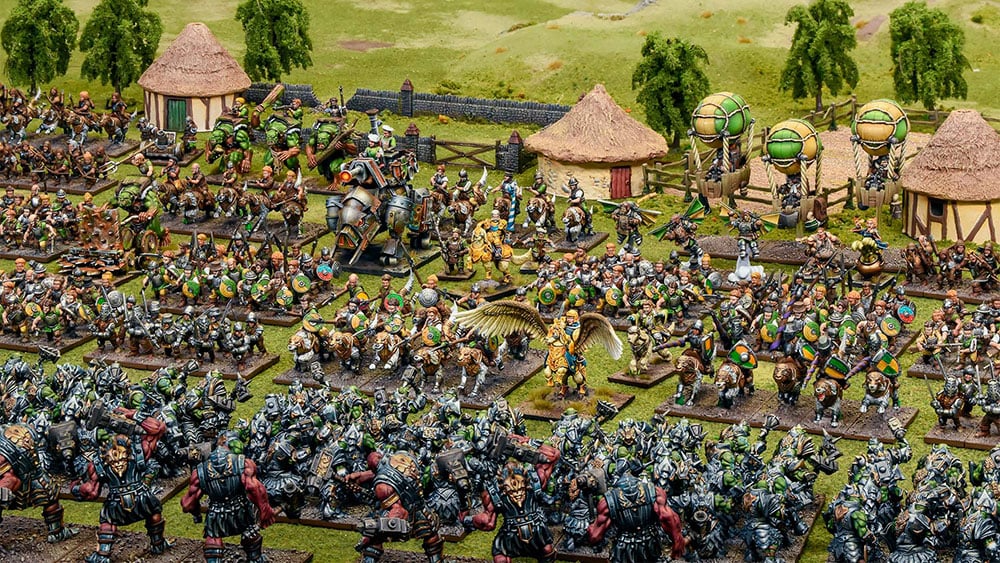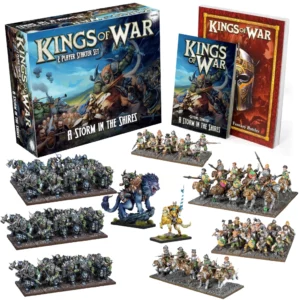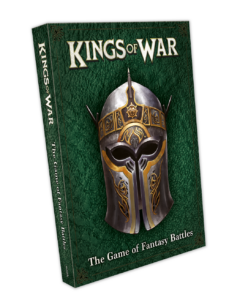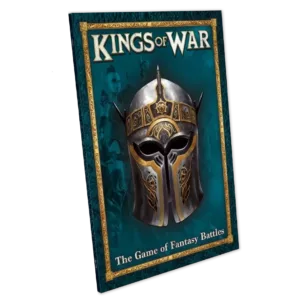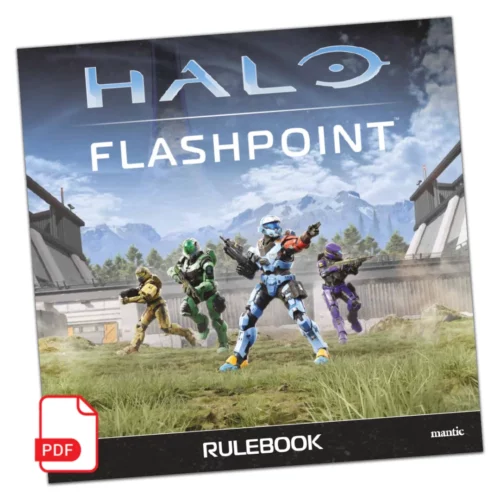Kings of War – A Getting Started Guide
14th Feb 2022
Jonny Mann
With a shiny new two player starter set available to pre-order now (click here), we take a look at the basic game mechanics for Kings Of War. Hopefully by the end of this article those that have been considering dipping their toes into this incredible game will be wading into the Infant Sea!
Kings of War is a table-top war game that allows you to play epic fantasy battles in the world of Pannithor. You and your opponent will pit your wits and armies against each other in a battle of tactics, a contest of skill and an explosion of magic and steel.
How do you play Kings of War?
Both players each choose one of the armies taken from those available from the fantasy world of Pannithor (there are now more than 20 armies to choose from in the core rulebook and Uncharted Empires). They do this by spending “points” to build their force to an agreed limit. Then, once the armies are deployed on the table, the players take it in turns to move, shoot and fight with the units which they are using.
Each player turn is broken down into the following phases, conducted in order:
The Movement Phase
Units are given orders to advance, turn, retreat and charge using their Speed (Sp) value. Everything can be pre-measured in advance anytime in the turn. All distances are measured in inches. Terrain may slow a unit (or limit what it can do) but friendly units are allowed to move (not charge) through each other freely, making it easy to attack or defend in waves. The movement rules are simple and elegant, allowing a great deal of tactical game play. You can move (and charge) units in any order you like. You don’t have to declare anything in any order either, but if you want more than one unit to charge an enemy unit, you move all your charging units together.
Charging units have a good degree of freedom, representing them running round obstacles and units to get to their target. The game allows you to play and move armies the way you imagine they would behave in real life. The rules work with you rather than against you in this regard.
The Ranged Phase
Units that have not charged into combat and have ranged weapons may now fire them at enemy units that are in range. Magic spells are also cast in the Ranged phase; there is no separate magic phase. Spells are simply considered ranged attacks just like firing a bow or a rifle. Units roll to hit using their Ranged (Ra) value and then to damage the target using its Defence (De) value. Damage caused is recorded against the enemy unit (adding to any previously caused).
War engines also unleash their destructive power in the Ranged phase, typically firing up to 48” – making them a potentially destructive addition to a force.
The Melee Phase
Units that charged into combat in the Movement phase now fight in the Melee phase. Units roll to hit using their Melee (Me) value and then to damage the target using its Defence (De) value. Damage caused is recorded against the enemy unit (adding to any previously caused). If the attacking unit(s) fail to Rout (destroy) the target unit, they remain engaged in combat. They will have the option to unengage – if they manage to survive a counter charge from the enemy.
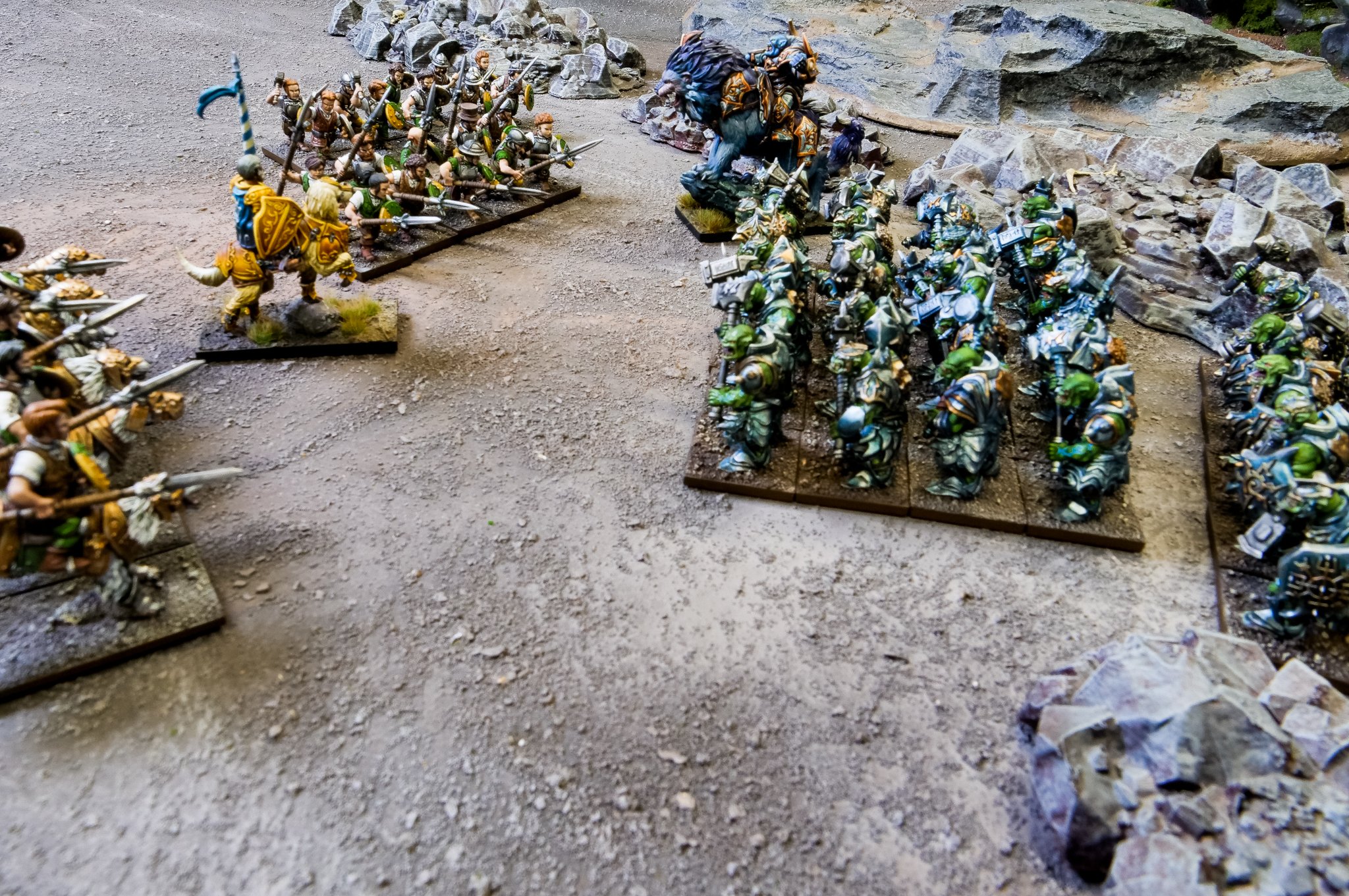
Nerve
Nerve is the way in which players determine whether units are still able to fight or have been destroyed (or have fled). It represents both the morale of the unit and the amount of casualties it can absorb before it is rendered ineffective. Damage caused on a unit will build up over the course of a game and each phase in which a unit takes damage, the attacking player will test against the Nerve (Ne) values of the damaged unit, adding the damaged caused so far to the roll. This will determine whether the unit is: Steady (will able to act fully), Wavered (limited options in its next turn) or Routed (destroyed and removed from the table). Units have 2 values under the Ne statistic (e.g. 14/16). The first number is what is needed to Waver the unit (roll this or above) and the second number is what is required to Rout the unit (rolling this or above).
Special Rules
There are a number of special rules units can have. These are things like Crushing Strength that will lower the De value of enemy units in Melee or Inspiring which means a Rout result on a unit requires a re-roll if they are within 6” of an Inspiring unit. Combined with the range of values units have for how fast they move and how good they are at shooting, fighting and in defence, these Special rules mean armies can have great variety in their units, and how they behave and interact with each other and the enemy.
Other key matters
In your turn, you do everything: all movement and all dice rolling – while your opponent plots their cunning tactics and counter-maneuvers for their following turn. This might be different from other systems you have played but as well as speeding the game up it also allows for an intriguing twist and a solution to tournament games running to time. Timed games work really well in Kings of War by setting each player a maximum time they have to play their game and so they are only using (or wasting!) their own time when it’s their turn! Casual games don’t tend to use this option of course but most tournaments will. It certainly adds another exciting dimension to the game.
One of the big selling points for many people is that fact that, because models are not removed from units to represent casualties, it means units can be modelled as single pieces, with action poses, scenery elements and dynamic dioramas (known as multibasing). This can add a wonderful visual element to armies and players can really go to town and create great themed and detailed playing pieces.
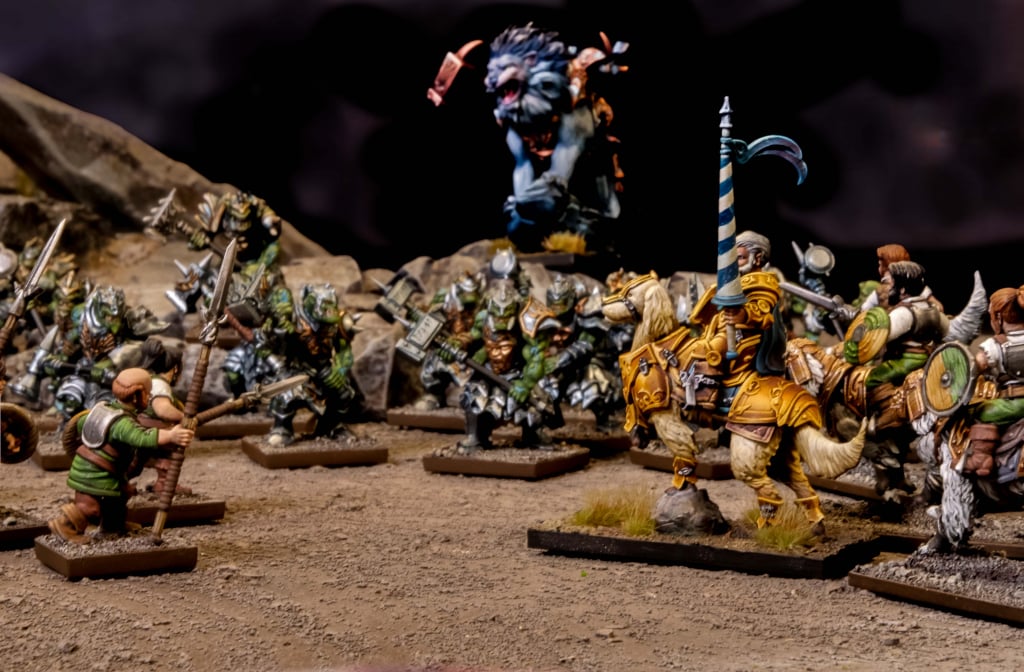

 GBP
GBP  EUR
EUR  USD
USD 